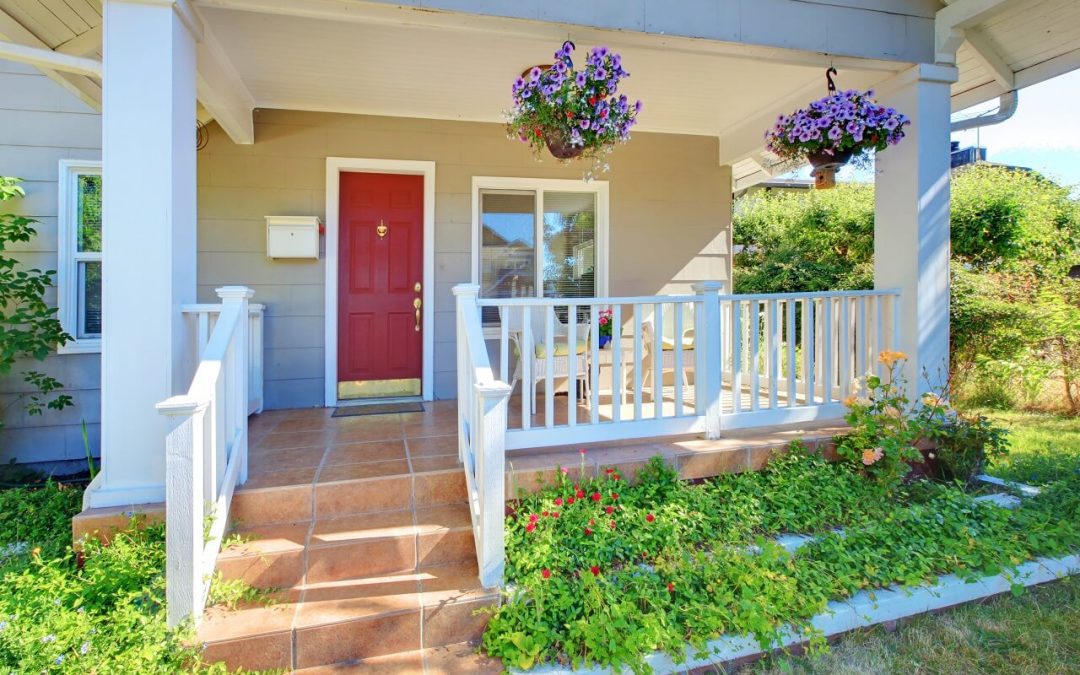Energy-efficient doors are installed in a home’s entryways to save energy and help reduce power bills. A new energy-efficient door boosts curb appeal, makes a property more desirable to buyers, and saves the homeowner money. Here are some things you should know about energy-efficient doors for your home.
What Makes an Energy-Efficient Door?
Heat flow, material, core, frame, and weatherstripping contribute to a door’s energy efficiency. This efficiency is typically measured in a few ways.
R-value measures how well the energy-efficient door’s material insulates. A high R-value means a more insulating material.
U-factor measures the rate at which heat flows through the door. A low U-factor means less heat flow and better insulation.
SHGC (solar heat gain coefficient) measures the amount of solar radiation a door allows in. A lower SHGC means less heat gets in, leading to lower cooling costs. A higher solar heat gain coefficient indicates the door allows radiant heat from the sun, meaning lower heating costs.
You can look at a new door’s label to learn how a door rates. EnergyStar requires doors to have a U-factor of 0.17 or less (or 0.30 for sliding glass doors) to earn their rating.
Parts of an Energy-Efficient Door
Energy-efficient doors have several components that affect their durability and functionality.
Energy-Efficient Door Materials
Glass has a low R-value and is a poor insulator, except for glass with a low-E (low-emissivity) coating, which is double- or triple-paned. Low-E coatings block UV rays, and the layers of glass provide more insulation from the environment. Some glass has a low-conductivity gas between the panes to provide even more insulation.
Solid wood has a high R-value but can be difficult to insulate. Wood also tends to warp, and gaps form over time. Wood cladding can be added to an insulated fiberglass or metal door for the look of wood but with the improved energy efficiency of other materials.
Fiberglass, steel, and aluminum doors with insulated cores are the most energy-efficient options. But, hollow and uninsulated metal doors will conduct more heat than solid wood.
Core
An energy-efficient door usually has an insulated core to help reduce the transfer of heat or cold through the material. Polyurethane foam insulation is standard and has a high R-value, making it resistant to thermal conduction.
Door Frame
The door frame creates a barrier between the outside and inside temperatures. Different frame materials provide different levels of insulation. Wooden frames are common. However, they are susceptible to moisture damage and termites. Homeowners might choose aluminum, fiberglass, or composite materials for the door frame.
Weatherstripping is Necessary for Energy-Efficient Doors
An energy-efficient door will always have weatherstripping added to prevent air leaks. Magnetic styles provide a perfect seal every time the door is closed.
Caulk pre-hung doors around the frame (under the decorative trim), and the door sweep – which protects a home from air leaks under the door – should connect with the floor.
Replacing the weatherstripping and door sweep is one of the quickest and lowest-cost ways a homeowner can improve the energy efficiency of a door and save on heating and cooling bills.
Liberty Inspections provides home inspection services to the southeast Tennessee and northwest Georgia area. Contact us to schedule an appointment.
